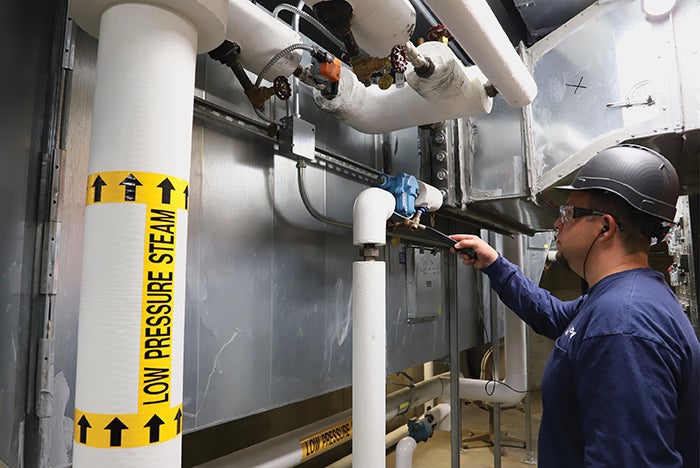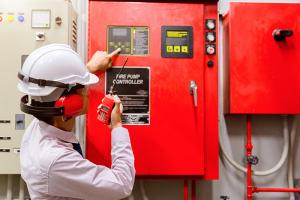Steam program reduces energy use

A senior APM Steam technician tests a steam trap using ultrasonic technology.
Image courtesy of APM Steam
Northwell Health, a major New York health care provider, has been at the forefront of energy efficiency for years. With 23 hospitals, more than 16,600 credentialed physicians, 18,900 nurses and 5,000 volunteers, Northwell Health serves as a vital resource to New York City, Long Island, Westchester and other communities across the state.
In 2018, Northwell launched an energy steering committee to oversee energy use and implement initiatives to reduce its energy costs. One such initiative, a partnership with American Plant Maintenance (APM Steam) in Woburn, Mass., focuses on steam system maintenance, aiming to optimize efficiency and reduce energy consumption while maintaining high-quality patient care.
Many of Northwell Health’s facilities rely on complex steam systems for heating, sterilization and other critical operations. Maintaining these systems is essential to attain operational efficiency and patient safety. Yet steam traps — essential components that remove condensate without losing steam — are prone to failure over time. A single leaking or plugged trap can cause substantial energy loss and drive up operational costs. With hundreds of steam traps across multiple hospitals, identifying and addressing failures required a proactive and scalable solution.
In 2019, Northwell Health partnered with APM Steam to implement an annual steam system maintenance program. This program involves surveying steam traps across the hospital network, identifying issues and performing necessary repairs. APM Steam’s comprehensive approach includes inspecting steam traps, replacing or repairing faulty components, installing insulation to reduce heat loss and descaling heat exchangers to attain optimal performance.
“Once our teams are on-site, our technicians operate autonomously,” says Ricardo Aguirre, CEO at APM Steam. “However, hospital facilities managers provide us with a contact within the facilities team who will escort us around the premises, granting us access to mechanical spaces and answering operational questions.”
APM Steam also manages the utility incentive process, ensuring that Northwell receives available rebates while providing detailed data to guide maintenance decisions and prioritize high-impact improvements. Haneef Khan, a senior advisor at Northwell and member of its energy steering committee, explains the value of this approach.
“The energy and cost savings were staggering. Combining that with incentive funding for energy reduction by [utility providers] National Grid and [ConEdison], we can achieve payback in well under 12 months by proactively maintaining steam traps, system insulation and heat exchangers across our hospital portfolio,” Khan says. “The dollars we save in energy can be used to improve the quality of services we offer the communities we serve.”
The partnership has delivered substantial results for Northwell Health. Since Jan. 1, 2022, APM Steam has surveyed 9,817 steam traps across the hospital network, resulting in:
- $2,403,672 in gas and electric savings.
- $1,162,551 in utility incentives secured.
- 946,500 natural gas British thermal units saved.
These efforts have yielded an overall return on investment in just 1.4 years. The reduction in natural gas consumption supports the hospital network’s broader operational efficiency goals, freeing up budget for other critical improvements.
Northwell Health has prioritized energy efficiency by participating in incentive programs offered by utility providers National Grid and ConEdison. These incentives are instrumental in offsetting project costs and accelerating payback periods. With ongoing support from APM Steam, Northwell ensures that its steam systems operate safely and efficiently — minimizing waste, maximizing savings and maintaining reliability.




